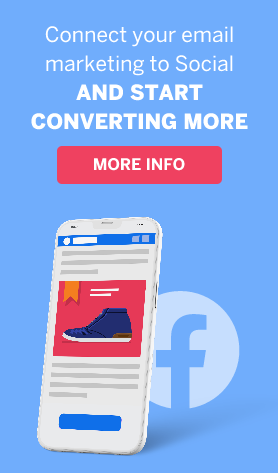How to Improve Your Sign Up Forms and Gain More Subscribers in Three Simple Steps
Want to improve the sign up forms in your campaigns? You should start with your words.
When discussing optimization of email sign up forms, we tend to forget about the most basic and crucial element – the words that we use. We dedicate a significant amount of time to the layout design of the sign up form, the details that has to be filled out in it and the size of its buttons, yet few people are willing to dedicate their time to the text itself.
Words hold a lot of power. When Cabot Heritage Corporation wrote “Registration” on their form’s submit button, the number of subscribers plummeted by 22.9 percent. Don’t let this happen to you!
Here are Three Steps to Improve Your Sign Up Form:
The Power of a Word: Join or Sign Up?
Different sites describe the sign up process differently. Some use the word “Join,” some use “Sign Up” and others use “Sign Up Now.” Is there any meaning in the choice of words?
“Sign Up” is often used in regards to paying for a certain product or service. If you sign up for a gym or for a photography class, there’s a chance that the word’s connotation will lead to some hesitation. On the other hand, ‘sign up for free’ implies greater value than ‘join for free.’
The word ‘Join’, however, implies some level of commitment. Does using this word yield a greater chance of convincing users to sign up? Unfortunately, there’s no unequivocal answer. The meaning of words always depends on the context in which they are used. The site Lawbooks, for instance, asks its readers if they are interested in “being updated on the latest law products” and “saving more” on online purchases. In this case, signing up for the mailing list can be compared to joining a membership club, and the word “join” holds a lot of power.
In one case the wording “sign up” can boost the registration number and in another case, not so much. You should try experimenting a number of different options, to see how each one affects your statistics. You can also try different combinations: ‘Sign Up Now,’ ‘Sign Up,’ ‘Join’ and ‘Join Our Membership’ – each of these can drastically change your mailing list growth rate.
Email Campaign: Newsletter or Update?
Do you call your campaigns ‘Newsletters?’ Or maybe ‘Updates?’ The word ‘updates’ implies time sensitive information, in other words, news or sales. ‘Newsletter,’ on the other hand, implies an email containing fewer marketing promotions and more content.
Choosing the right word will not only affect the numbers of new subscribers, but also how they’ll perceive your campaigns. If the users expect to receive updates on sales, but instead they receive professional articles, they may just regret ever having signed up.
Try to use the wording that correctly reflects your campaigns. You can do this even if you don’t have enough room to describe it in detail; what you call your campaign can give the users enough insight.
Etsy mentions in their sign up form that they send ‘top trends and fresh editors’ picks.’
Moreover, Etsy created a catchy name for their newsletter “Etsy Finds,” which immediately gives you a sense of what to expect in it, when you receive it in your mail box.
Lose the Gibberish
The marketing world has its very own language, and everyone working in the field is well accustomed to it. For your users, however, this language may seem like a random collection of meaningless symbols. This tendency of marketers causes situations of under communication.
The sign up form needs to be as intuitive and as easy as possible. You are not the average user: for example there are cases where users are not sure where to click in order to submit their email address. If you don’t have a clear submit button, not all of the users will understand that they need to click on that weird-looking arrow at the end of the form.
Another example is related to the number of emails you are going to send. If you write that your campaign is ‘bi-weekly,’ will your users assume that the campaign is sent out once every two weeks or twice a week? The right answer, of course, is twice a week, but not all of your users will know that.
OZY Magazine writes in its sign up form exactly how many articles the subscribers will receive in their inbox in each email they get and when they will get it:
Do all users know what ‘opt-in’ means? HTML version? ‘Registration removal?’
Ask a friend outside of the email marketing field to read your sign up form. If they don’t understand some of the words, change them.
In general, keep your call to action clear; help your readers understand what you want them to do and where.
On the popular site BuzzFeed, you can sign up for weekly updates on This Week in Cats. This way, cat lovers can sign up in one place and rest assured that they will receive all of the weekly viral cat news straight to their inbox.
Whether you’re looking to expand your customer audience and offer attractive sales, or if you’re more like BuzzFeed that want people to read about cats, your target audience is online and they want your updates to make their way into their inbox. Think about the service you offer, on the correct terminology, on the value that you’re presenting to the user, and how you jump-start it into action.
So you’ve built your mailing list –the time has now come to actually use it. Send interesting campaigns with the help of: 14 Ideas For a Newsletter That Will Interest Your Users.
Check out additional articles from ActiveTrail’s Blog.





